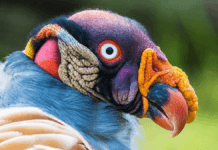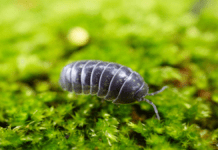Did you watch the animated movie called “The Lion King”? Do you remember “Timon” in there? Today I’m going to bring you some interesting facts about these real-life ‘Timons’. It means ‘Meerkats’! Whether it has a ‘Kat’ part in his name, it is not actually a cat. It is a proud member of the mongoose family. They are very clever and amazing animals who work together with their own kind. Let’s find out some interesting facts about these little cuties!
What about some basic info?

Meerkats usually live as large groups of up to 40 members underground. Those groups are called a mob or a gang. When considering their body size, their body length varies between 24-29 centimeters. And their weight varies between 620-970 grams. Usually, the female ones are slightly larger than their males. They have a life span of around 10 years. They become sexually mature at about the age of one and half years and produce 1-8 babies after a gestation period of 10 weeks.
How about their behavior?

As I mentioned previously, they live as a mob. A mob consists of several family groups. They don’t need to be relatives to be in the same mob. These mobs are controlled by one dominant pair that produce babies most of the time. Ultimately the female one is the actual ruler of this mob. The most interesting fact is only this alpha female reproduces and if another female in their mob got pregnant, the alpha female banish her from the mob and sometimes kill her babies too. In 2013 a research conducted about these meerkats and found out that the females who were banished, serve alpha female as wet nurses taking care of her children with the purpose of rejoining the mob.
They also have a good companionship. They have a habit of babysitting each other’s babies. During day time, most of the gang go hunting or standing guard. During that period one female or a male stays in the burrow and takes care of all the pups in their mob. Most of the time the meerkat with the least hungry remain there. At the end of the day, other meerkats don’t forget to reward the babysitter with the foods they found!

Meerkats are good diggers. But they used to live in burrows dug by other animals. Usually, the ones dug by ground squirrels. These burrows have several chambers and tunnels in several levels including around 15 entrance holes. The deeper tunnels in their burrows are very comfortable and have constant temperatures. A mob usually has several such burrow systems within their territory. They move from one burrow to another every few months.
Did you know that meerkats are selfish? Yes, it is. Specially the alpha female. A study done in 2013 pointed out this behavior. When a mob of meerkats moves and if the alpha female gets a feeling of potential danger, she suddenly falls back and lets other females go first.
What are their adaptations?

Meerkats have dark skin and thin fur on their bellies. This adaptation helps them to control their body temperature. When the sun rises, meerkats come out from their borrows and spend some time under the sun while lying on their back. It quickly warms them. During the midday heat, they lie their stomachs on cool rocks and cool down their bodies.
And also they have some adaptations and behaviors to protect from their predators. Jackals, falcons, and eagles are the main predators of meerkats. To protect from these predators, some adults act as guards while others search for food without any worries. Those guards climb up to a high rock or a bush and stand on their back legs and announce the start of their duty with a special sound. This sound is known as the ‘watchman’s song’ by animalists.

When those guards spot predators, they inform others with a whistle or a bark. They have different sounds for different predators that come from land and air. When meerkats are informed about predators, they run to the nearest hole and go underground as soon as possible. These holes have wide openings allowing many meerkats to enter at once. The amazing thing is these meerkats remember thousands of those holds in their territory. It allows them to run and hide from the closest hole within a few moments. And also sometimes meerkat mobs stir up dust and create a cover while hiding.
And also adult meerkats are immune to many venom types. Some snakes come underground looking for meerkats to feed on them. But it is not an easy task. When meerkats find such a venomous snake, they attack it as a mob and bite it wherever possible. Within a short time, the snake becomes tired of the attackers and gets overwhelmed.

When considering meerkat territory, they use scent pouches in their tails and rub them on plants and rocks around them to mark their territory. When territories of different meerkat mobs are overlapped, it becomes a fight between gangs. Meerkats are very aggressive fighters and sometimes kill each other in fights. When they are having fights, it looks like some kind of a human fight. Meerkats of both sides line up across a field and they charge forward at the same time. As these fights are frequent, less than half of the meerkats survive each year. Even though they are known as very brutal fighters, they accept outsiders to their mobs and they also share burrows with yellow mongooses sometimes.
What do they eat?

Their main diets include insects, snails, birds, scorpions, lizards, and spiders. They have a high-level sense of smell and they can smell prey even it is hiding underground. When they get the smell, they dig very quickly and find the prey. Usually, a meerkat mob has a territory of about 10 square kilometers. They divide it into sections and each day they hunt in a different section. They return to the first section after about a week. All meerkats find their own food. But if they find a large prey like a large lizard, they share it with others in the mob.

















